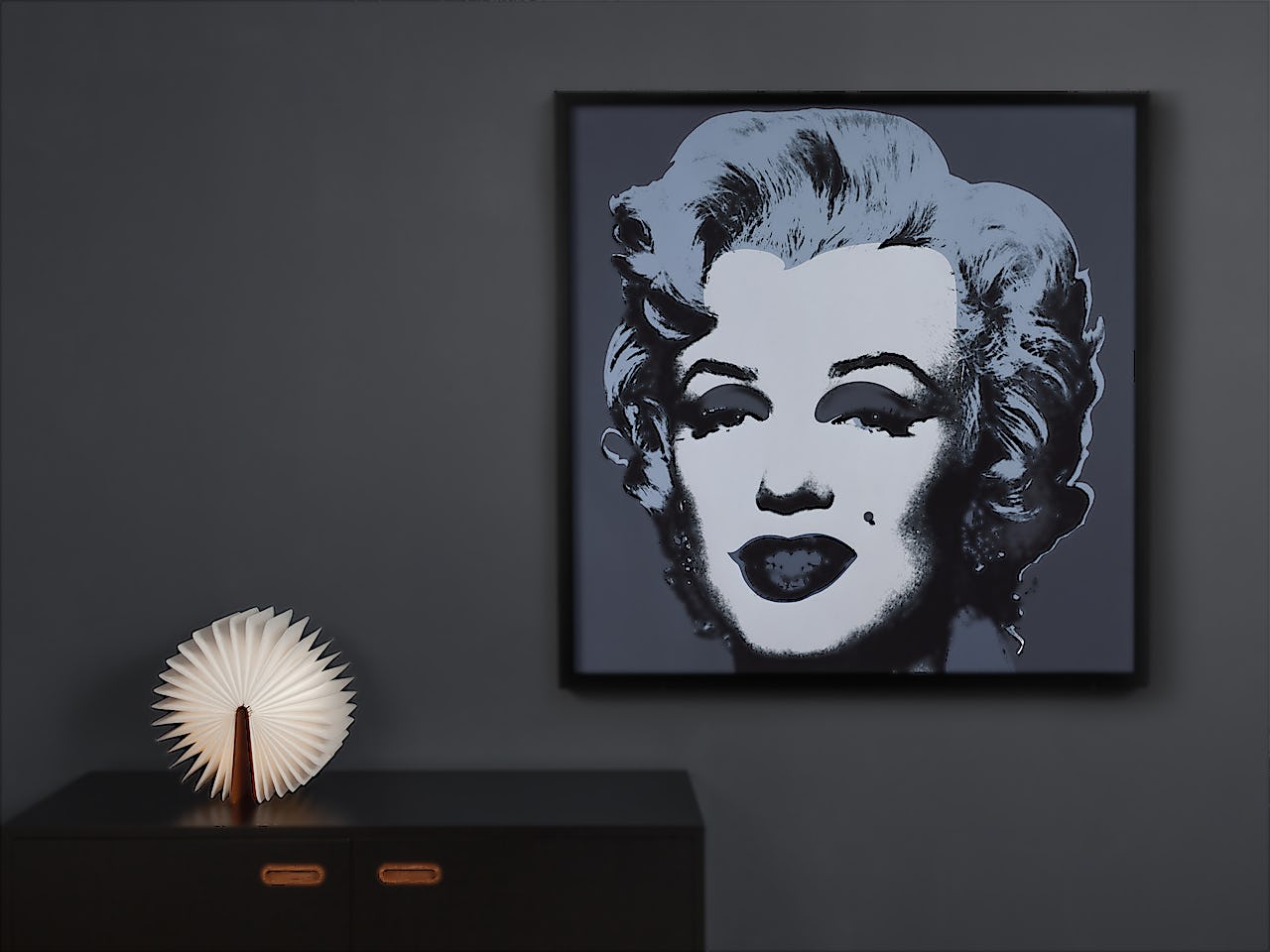Andy Warhol: Immortalising Marilyn
Reading time: 2 mins
With a glittering acting career spanning 16 years, Marilyn Monroe became an icon of American pop culture. Andy Warhol, who was fascinated by her fame, immortalised her with a series of now iconic silkscreens. We explore the pop art prince’s infatuation with America’s most famous blonde bombshell, and the iconic silkscreen he made of her which sold for a record-breaking $195 million at auction.

From a young age, Warhol was enamoured by the glitz and glamour of Hollywood – as a working-class boy growing up in Pittsburgh it was a paradoxical world to his. In the early 1960s, before focusing intensely on the iconography of Marilyn Monroe, he produced a series of celebrity portraits of Elvis Presley, Jackie Kennedy and Elizabeth Taylor. Using photographic silkscreen printing meant he was able to reproduce publicity images that were already recognisable such as tabloid photographs.
Warhol knew he was on to something, though, when he printed a publicity image from the 1953 film ‘Niagara’ which Marilyn Monroe starred in. Gold Monroe, 1962 depicts her face against a high gloss sea of gold paint.
That same year, he produced Marilyn Diptych, 1962 a screen print in which he repeats Monroe’s face fifty times, half of them in colour, the other half in black and white. The rows of heads are thought to reference the mass production of postage stamps, billboards or even film strips.
Warhol’s magnetism to Monroe’s image continued into 1967 when he created a portfolio of ten screen prints based on the same portrait. By repeating Marilyn’s face as a visual motif (much like his Campbell's Soup Cans), he played with the idea of creating an icon out of an icon.
With screen printing Warhol had the freedom to anatomise a single image, experimenting with various ways it could be manipulated and distorted. Each print within his Marilyn portfolio uses different colour ways, making them unique from one another. All but one is vibrantly coloured.
Through the repetition of Monroe’s image Warhol plays on the themes of personas and how, in society, such personas can be mass consumed like products. By channelling mass production through his artistic practice, Warhol proclaimed that art was behaving ‘like a machine’.
In his view, ‘everybody should be a machine’, because machines cannot discriminate and, so, if the population behaved more like machines, ‘everybody should like everybody.’
Thought to have been commenting on ‘brand identity’, Warhol’s collection of Marilyn silkscreens disseminates a message of commodity and the distorted lines between celebrities and their true self. Deconstructing the image of Monroe may be interpreted as slowly revealing her pure identity, the person off-camera or away from the media’s spotlight.
In May 2022, Christie’s lead its marquee New York sales week with an auction of an Andy Warhol’s 1964 Shot Sage Blue Marilyn silkscreen. The silkscreen sold for $195 million, making it the most expensive twentieth-century painting to ever sell at auction.
The Shot Marilyns got their name when performance artist and friend-of-a-friend Dorothy Podber visited Warhol at his New York studio, which he called the Factory. Noticing a stack of freshly-painted works, Podber asked Warhol if she could shoot them. Warhol, assuming that she was asking for permission to photograph them, said yes, before Podber drew out a revolver and shot a bullet through the foreheads of the Marilyns.
Explaining the significance of the sale, Alex Rotter, Christie’s chairman for twentieth and twenty-first-century art said, ‘Andy Warhol’s ‘Marilyn’ is the absolute pinnacle of American Pop and the promise of the American dream, encapsulating optimism, fragility, celebrity and iconography all at once.’
Christie’s auctioned the work in a philanthropic sale to benefit the new Thomas and Doris Ammann Foundation Zürich, which is dedicated to improving the lives of children the world over by establishing support systems centred on providing healthcare and educational programs.
We’re honoured to produce a wide collection of Andy Warhol prints, produced in collaboration with our long-standing partner The Andy Warhol Foundation for the Visual Arts, including Warhol’s iconic Marilyns, his self-portraits, photography, illustrations, typography quotes, fashion, and more.
©/®/™ The Andy Warhol Foundation for the Visual Arts, Inc.
Subscribe to our newsletter
Be the first to hear about our new collections, limited edition launches, and enjoy artist interviews.
By subscribing you agree to our privacy policy.
Contact us
01273 511 942
Mon-Fri, 9 am - 5 pm
All art prints and images on this website are copyright protected and belong to their respective owners. All rights reserved.




